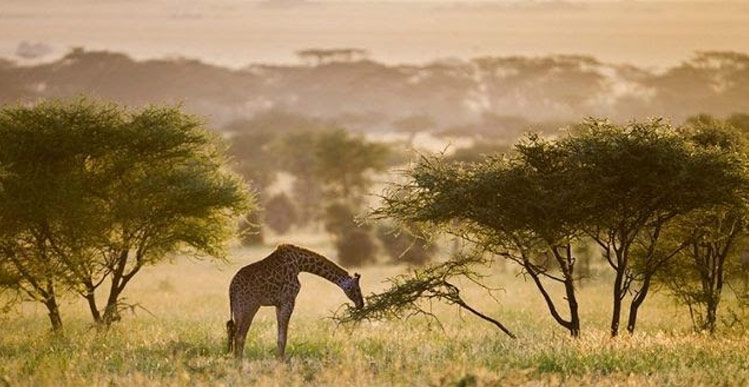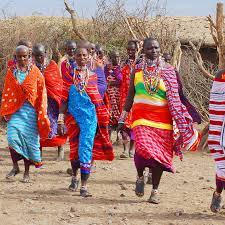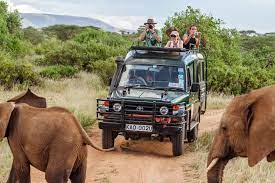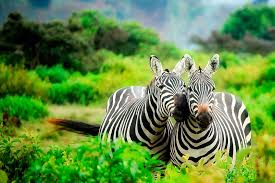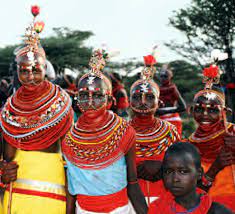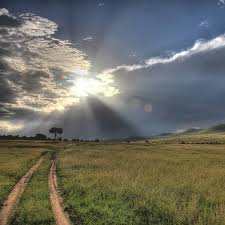Overview
Serengeti National Park is undoubtedly the best-known wildlife sanctuary in the world, unequalled for its natural beauty and scientific value, it has the greatest concentration of plains game in Africa
The Serengeti National Park in Tanzania was established in 1952. It is home to the greatest wildlife spectacle on earth – the great migration of wildebeest and zebra. The resident population of lion, cheetah, elephant, giraffe, and birds is also impressive. There’s a wide variety of accommodation available, from luxury lodges to mobile camps. The park covers 5,700 sq miles, (14,763 sq km), it’s larger than Connecticut, with at most a couple hundred vehicles driving around. The Park can be divided into 3 sections. The popular southern/central part (Seronera Valley), is what the Maasai called the “serengit”, the land of endless plains. It’s classic savannah, dotted with acacias and filled with wildlife. The western corridor is marked by the Grumeti River, and has more forests and dense bush. The north, Lobo area, meets up with Kenya’s Masai Mara Reserve, is the least visited section. Two World Heritage Sites and two Biosphere Reserves have been established within the 30,000 km² region. It’s unique ecosystem has inspired writers from Ernest Hemingway to Peter Mattheissen, filmakers like Hugo von Lawick and Alan Root as well as numerous photographers and scientists – many of which have put their works at our disposal to create this website.
The Serengeti ecosystem is one of the oldest on earth. The essential features of climate, vegetation and fauna have barely changed in the past million years. Early man himself made an appearance in Olduvai Gorge about two million years ago. Some patterns of life, death, adaptation and migration are as old as the hills themselves. It is the migration for which Serengeti is perhaps most famous. Over a million wildebeest and about 200,000 zebras flow south from the northern hills to the southern plains for the short rains every October and November, and then swirl west and north after the long rains in April, May and June. So strong is the ancient instinct to move that no drought, gorge or crocodile infested river can hold them back. The Wildebeest travel through a variety of parks, reserves and protected areas and through a variety of habitat. Join us to explore the different forms of vegetation and landscapes of the Serengeti ecosystem and meet some of their most fascinating inhabitants.
Best Time to Visit
Wildlife viewing in Serengeti National Park is good throughout the year, but certain areas are better at specific times. The Dry season (from late June to October) offers the best wildlife viewing in general – with the wildebeest migration as its absolute highlight. The timing of the migration varies every year (the best chance of seeing it is during June and July) while the wildebeest calving is from late January to February.
Best Time January-February for the wildebeest calving; June-September for general wildlife viewing with a chance of seeing the wildebeest crossing of the Grumeti River (June-July) or the Mara River (September)
High Season Most of the year – July to March (The Serengeti will be crowded around the Seronera area)
Low Season April and May (Lower rated may apply)
Best Weather June to October (Little to no rainfall)
Worst Weather March and April (Peak of Wet season)
June to October –Dry Season
- June and July are the best months to see the wildebeest migration in the western corridor and August to September in the north of the park
- Animals are easier to spot since they concentrate around waterholes and rivers and the vegetation is less thick
- It is mostly sunny and there is very little rain
- There are very few mosquitoes and the chance of contracting malaria is minimal
- The park gets quite crowded around the Seronera area
- Mornings and nights get cold – warm clothing is recommended for early morning game drives from June to August
November to May –Wet Season
- Late January to February is the time to see the calving in the southern Serengeti – this is an excellent time to see predator action
- The scenery is lush
- April and May are low season, so it’s usually less crowded and rates might be lower
- Although wildlife is easier to spot in the Dry season, the Serengeti offers good wildlife viewing throughout the year
- Migratory birds are present and bird-watching is at its best
- Except for March, April and May, rains are mostly short afternoon storms and seldom interfere with your trip
- March to May is the peak of the Wet season
Getting There
Most safaris to the Serengeti start from the town of Arusha. The best option to get there is to fly into Kilimanjaro International Airport (JRO) which is situated about 46km/29mi from Arusha. It is also possible to fly into Julius Nyerere International Airport (DAR), just outside of Dar es Salaam, and use a domestic flight to get to Arusha Airport (ARK) or Kilimanjaro International Airport (JRO). The most convenient way to get from Arusha to the Serengeti is by taking a small plane to one of the various airstrips in the park. The drive from Arusha to the Serengeti is about 325km/202mi and will take about eight hours. It is a bumpy ride and, for a large part, over dirt roads – but the trip offers beautiful scenery. You’ll surely see some wildlife on the way or may even do a game drive en route.
As the trip takes you through the Ngorongoro Conservation area, a popular option is to fly one way, and drive the other way taking in an overnight stop to visit the Ngorongoro Crater. Coming from the crater, the distance to the Seronera area in the Serengeti is about 140km/90mi, and the driving time is about three hours.
Activities
- Balloon Safaris
- Birding Safaris
- Wildlife Safaris
- Camping Safaris
- Luxury Safaris
- Wedding Safari
Uniqueness
You may have heard a saying, “Everything is bound to die”. It is true for each and every living and non-living thing in the Universe. At home, you may be waiting for your best moments, but there is a place in this World where death is waiting every time. Death can come in very next second and can pick anyone. No one knows who will be the next. Yes, you are thinking right, this is the Serengeti National Park. The Serengeti is the greatest thrilling park on the Planet. It’s not just the wildlife, though the sight of more than two million animals moving across the plains is regularly cited as the greatest wildlife spectacle on Earth. Nor is it the size, although, at 14,763 sq. km. (5,758 sq. miles), the park shows the greater ecosystem. Migration of Animals is blooming its beauty. If you want to know more, read these some most intriguing facts about the unique place on Earth, Serengeti National Park:
1. Endless Plain
In Masai Language, Serengeti means, “endless plain”. It spans 12,000 square miles (30,000 square kilometers).
2. Have A Ride In African Safari
Serengeti National Park is one of the most visited National Parks in the Africa. Every year more than 100,000 people visit this park. This number does not include locals who visit the park, just tourists from other places. It is the well-known park for African Safari vacation. This is due to the wide diversity of the wildlife found within the park.
3. Oldest Ecosystem On The Globe
Eco-system of the Serengeti National Park is the oldest Ecosystem on the Planet. It boasts a diversity of flora and fauna that is unavailable anywhere else on the globe.
4. Never Miss This Migration
Serengeti is home to one of the world’s seven natural wonders – the more than 1 million wildebeest Migration that crosses the Mara River from Maasai Mara National Park in Kenya to the Serengeti National Park in search of the green pastures. Most of the Tourists focus on this Migration, Although Zebras too migrate but in small numbers.
5. Life Is Intact Here
Over the period of one million years, the wildlife, plants, and other native species in the park have changed a bit. The pattern of life has not changed at all in these years, and one of the oldest known remains of the man dating back two million years were found in this region
6. Have You Ever Meet Big Cats?
Serengeti is a perfect place to see all big cats except Tigers. You can see Lion, Cheetah, Jaguar, and Leopard easily here. They all hunt wild animals to survive.
7. Unique Fauna
Serengeti has a unique flora and fauna. It is full of huge Flora and Fauna. The park also boasts about 500 bird species, including ostrich, secretary bird, kori bustard, crowned crane, marabou stork, martial eagle, lovebirds, and so many others and you can see great herds of buffalo, smaller groups of elephant and giraffe, and thousands upon thousands of eland, topi, kongoni, impala and Grant’s gazelle at any time of the year. Serengeti is home to more than 1,000,000 wildebeest, 200,000 Zebras, and 300,000 Thomson’s gazelles, etc.
8. What? Human Also Live Here?
Serengeti is inhabited by Masai and Swahili people. They have been living here for millions of years. They represent their unique culture. Some people are educated in these tribes so sometimes they guide tourists. Apart from these tribes, Human habitation is prohibited in the Park.
9. Also Home To An Active Volcano
Serengeti is also home to the only active volcano in the area – the Ol Doinyo Lengai. It ejects mineral rich carbonate lava that is washed down to the plains of Serengeti to fertilize the land.
10. Do You Wanna Have A Balloon Safari?
If You Wanna take a Panoramic view of Serengeti, you can enjoy it having a balloon Safari. From altitude, Beauty of Serengeti is beggars description.
11. Don’t Mess With Lions
Serengeti has the largest population of the lions in the World due in part to the abundance of prey species. More than 3,000 lions live in this ecosystem. They live in pride and dominate the region
12. Who Was The First?
Austrian Oscar Baumann was the first European to visit this site in 1892 and Stewart Edward White was the first American who explored this region in 1913 and collected many data on the site.
Enjoy A Balloon Safari Now!

